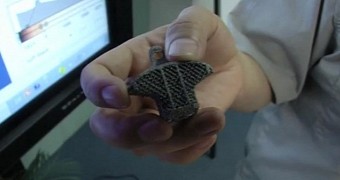3D printed implants are a relatively young field of research and development, but also one that has been experiencing very rapid growth, thanks to the benefits of the technology. Benefits which a young boy now gets to enjoy for himself.
Implants are actually pretty safe compared to vaccines, serums, and radio or chemotherapies, since the risk of them causing harm to the rest of the body other than the area affected by an injury or organ failure is pretty small. Well, so long as the substance which the implant is made of is not rejected by the body at least.
Because of that, bone/joint implants are quite sought after by those with the money to pay for them. And now, money may no longer be an issue, all thanks to 3D printing technology.
You see, most of the cost associated with such implants stems from the difficulty in building them to precise measurements and specifications. In most cases, large parts have to be done by hand.
3D printing technology has changed that, cutting the time of development to a tenth of what it was, and doing the same to the cost.
A 12-year-old boy receives a 3D printed vertebra
This is the very first successful implantation of a vertebra that was entirely 3D printed. A boy from China, by the name of Minghao, who suffers from cancer was implanted with it by a team at the Peking University Third Hospital in Beijing. The vertebra didn't need any special cement or screws.
That means that the boy will recover quickly and also maintain a far greater range of motion in his neck (where he had suffered a traumatic injury).
The procedure (the surgery to implant the vertebra) took five hours and was performed back in August. The reason people waited so long for this latest announcement to be made is that everyone involved wished to make sure there were no complications.
The vertebra was made of titanium powder and has small pores, so than bone may grow through it and bind it properly to the rest of the skeleton.
3D printing in medicine
There have been many applications of this type, from 3D printed prosthetics to 3D printed casts and even 3D printed tissues and organs (livers mostly, but they're already being used for drug tests).
To provide some perspective, it is believed that 3-4 million knee implants alone will be performed annually by 2030.

 14 DAY TRIAL //
14 DAY TRIAL //